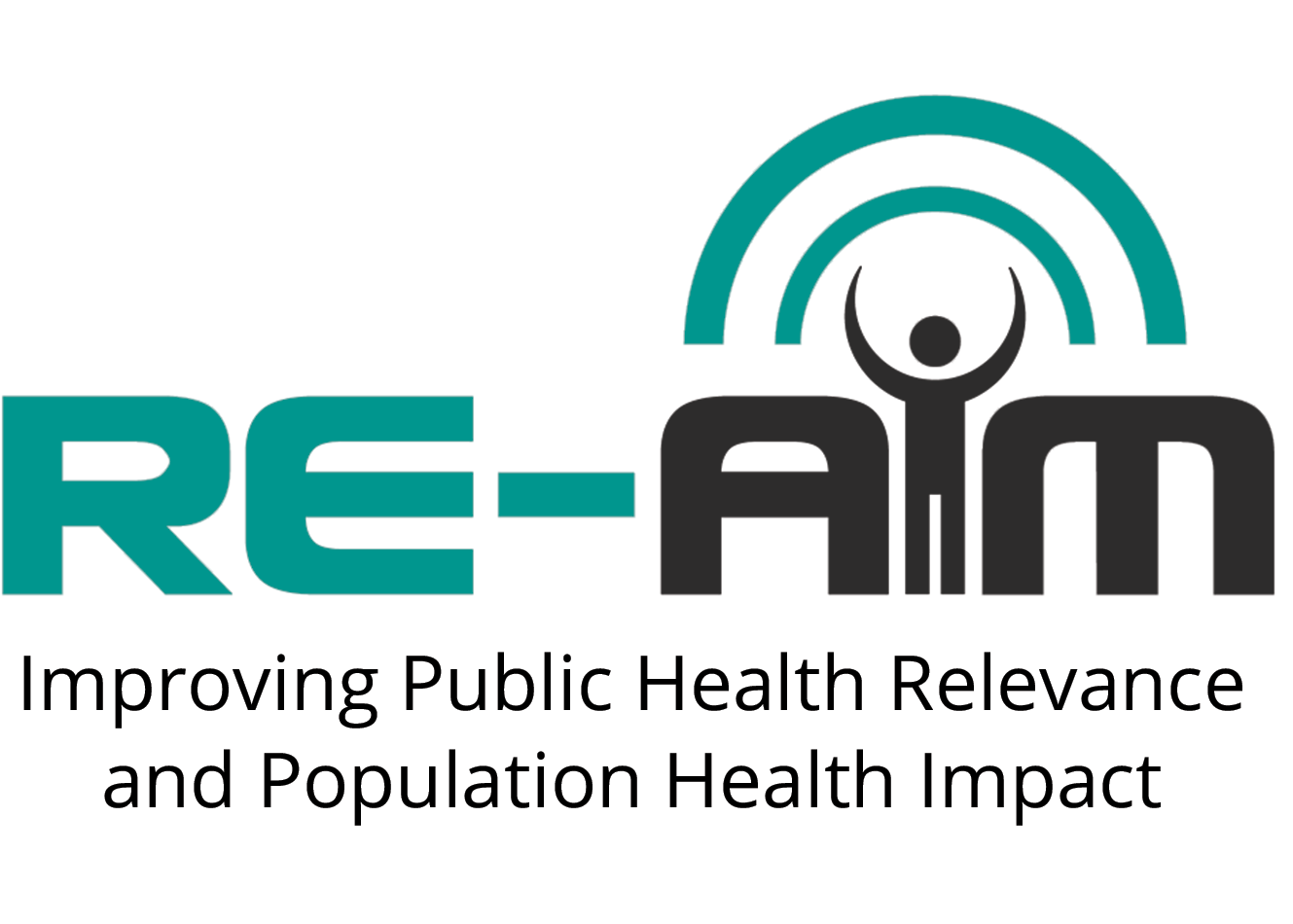Dr. Ric Rosenkranz & Chelsey Schlechter recently applied RE-AIM to a review of recent
literature to assess external validity components of child dietary interventions featuring parents
as change agents, and examined the contribution of parent involvement to the effectiveness of
dietary interventions (Schlechter et al., 2016). They were nice enough to provide the following
for folks to think about as they consider applying RE-AIM to a synthesis of a body of literature.
Applying RE-AIM to the evaluation of published efficacy or effectiveness studies can pose
several challenges. In general, these challenges tend to arise from lack of sufficient information
within the published work, or from having a mix of information that may be difficult to classify.
For us, these challenges included:
1) Reporting of RE-AIM elements. Much of the literature that we reviewed focused on
Effectiveness, but details were scant or missing for Reach, Adoption, Implementation, and
Maintenance. Consistent with many other review papers that have focused on RE-AIM, it was
difficult to reach firm conclusions because the authors did not report sufficient detail of these
indices of external validity.
2) How to classify the parent’s role within the RE-AIM framework. During data extraction, we
compiled two sets of RE-AIM categories: one for the parent and one for the child. As we began
to compose the manuscript, we decided to define parents as the agents of change. This decision
led to classification of parents as ‘Adopters’ within the home setting. Based on Lichstein’s
Implementation model (delivery, receipt, enactment), we re-organized the information that we
had originally coded. Our measure of Implementation became receipt (e.g., did the parent
complete the homework that the child brought home?) and Effectiveness became enactment
(e.g., did the parent provide more fruits and vegetables during meal time?). During the peer
review process, reviewers did not agree with those designations. Therefore, we needed to bolster
our reasoning and our argument that parents were the leaders within the home setting, and
therefore suitable targets for Adoption.
3). How to deal with parent-child dyads. Some of the studies we reviewed focused on parent-
child dyads as the unit of analysis and target of intervention. Therefore, we struggled to decide
how to treat such dyads, eventually deciding that children were the population for Reach metrics,
and parents were analyzed for Adoption metrics. In such cases, however, Reach and Adoption
numbers were identical.
4). How to describe the Effectiveness of direct vs indirect intervention strategies. From an earlier
systematic review on our topic, Hingle et al (2010) concluded that direct strategies were more
effective than indirect strategies. We followed Hingle and colleague’s (2010) definition of direct
and indirect strategies, as well as their ratings for Effectiveness (positive, mixed, no change).
Unfortunately, we were missing so much information on receipt and enactment of the parent
strategy, we were unable to draw a similar conclusion to the previous review. We dealt with this
issue by graphically depicting our conceptual model of how interventions featuring parents as
change agents should work, and where gaps may occur.
Findings and lessons learned: Our attempts to extract data relevant to external validity helped us
to understand not only the content of the review with a new perspective, it reinforced the crucial
need to plan data collection efforts and report results relevant to Reach, Adoption,
Implementation, and Maintenance. We found that the reporting of Implementation and other
external validity information from child dietary interventions featuring parents as change agents
was lacking. Also, a limited number of studies exist that were designed to test whether or not
parent involvement in child dietary interventions increased Effectiveness, compared to a non-
parent control. To improve the translation of research into practice, researchers must increasingly
emphasize external validity during the planning and reporting of interventions.
By Richard Rosenkranz and Chelsey Schlechter
References:
Hingle, M. D., O’Connor, T. M., Dave, J. M., & Baranowski, T. (2010). Parental involvement in
interventions to improve child dietary intake: a systematic review. Preventive Medicine, 51(2),
103-111.
Lichstein, K. L., Riedel, B. W., & Grieve, R. (1994). Fair tests of clinical trials: A treatment
implementation model. Advances in Behaviour Research and Therapy, 16(1), 1-29.
Schlechter, C. R., Rosenkranz, R. R., Guagliano, J. M., & Dzewaltowski, D. A. (2016). A
systematic review of children’s dietary interventions with parents as change agents: application
of the RE-AIM framework. Preventive Medicine, 91, 233-243.
